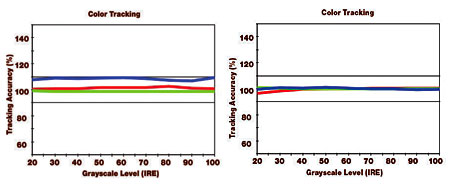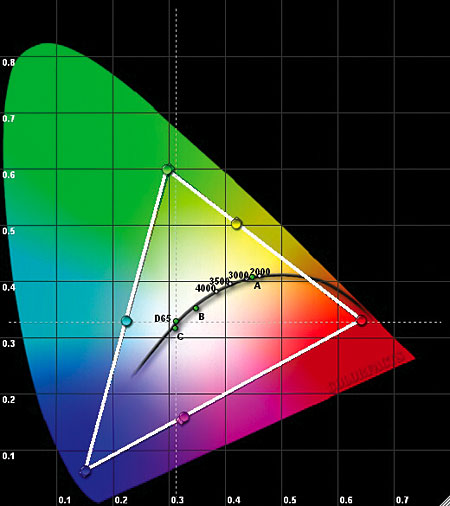Pioneer Elite KURO PRO-111FD Plasma HDTV HT Labs Measures
Black: 0.001
White: 37.0
Full-On/Full-Off Contrast Ratio: 37,000:1
All of the measurements here were taken in the Pure mode, adjusted for the most accurate picture. The Energy Save control was set to off. The full-on/full-off contrast ratio above speaks for itself. The Pioneer KURO PDP-6020FD we reviewed in the September 2008 issue (the latest KURO 60-inch standard-range model) actually had a lower measured black level—0.00 ft-L. But this difference appears to be strictly a result of unit-to-unit variation. (We’re dealing with very small numbers here.) Again, this is at the very threshold of our test instruments’ published specs for accuracy.
Some readers may recall that the gen-8 PRO-150FD we reviewed also had a measured black level of 0.001 ft-L. I was unable to view the PRO-150FD and the PRO-111FD side by side, but my impression was that the PRO-111FD has darker blacks. And apart from the fact that the PRO-150FD may have been an above-average gen-8 sample, keep in mind that our light meter rounds off to three decimal places. Even assuming absolute meter accuracy at its minimum sensitivity, that could mean that a reading of 0.001 could actually be anywhere between 0.0006 and 0.0014.
I did note a black-level oddity that I first saw on the PDP-6020. When I switched quickly from a bright white test pattern to video black, the black level would initially be elevated. After a few seconds, it would drop to the more typical, low level shown above. After another 15 to 30 seconds, it would drop further, to total black—as if the set had shut off (it hadn’t). But I only experienced this on test patterns.
The software needed to use the more precise ISF CCC feature was still under development. But even without it, the PRO-111FD calibrated beautifully. The color tracking charts below show how well a display adheres to the D65 standard white point. The pre-calibration result is for the Mid-Low color-temperature setting. Post calibration, the result deviates from nearly perfect compliance only at the darkest end of the brightness range, below 30 IRE, and then only to a degree that’s visually irrelevant.

The white triangle in the pie-shaped CIE chart shows the set’s color gamut in the Color Space 2 setting (Pure mode). It’s a virtual overlay of the ATSC standard (the black triangle, nearly invisible here).

The HDMI luma (black-and-white) resolution was superb up to the limit of our resolution test patterns in 1080i and 1080p, with the chroma (color response) nearly as good. The 720p (HDMI and component) resolution was slightly less impressive, but only by a step short of excellent. The same held for true 480i/p (HDMI and component)—within the more limited resolutions inherent to those formats. 1080i component fared the worst, with a satisfactory score.—TJN














































